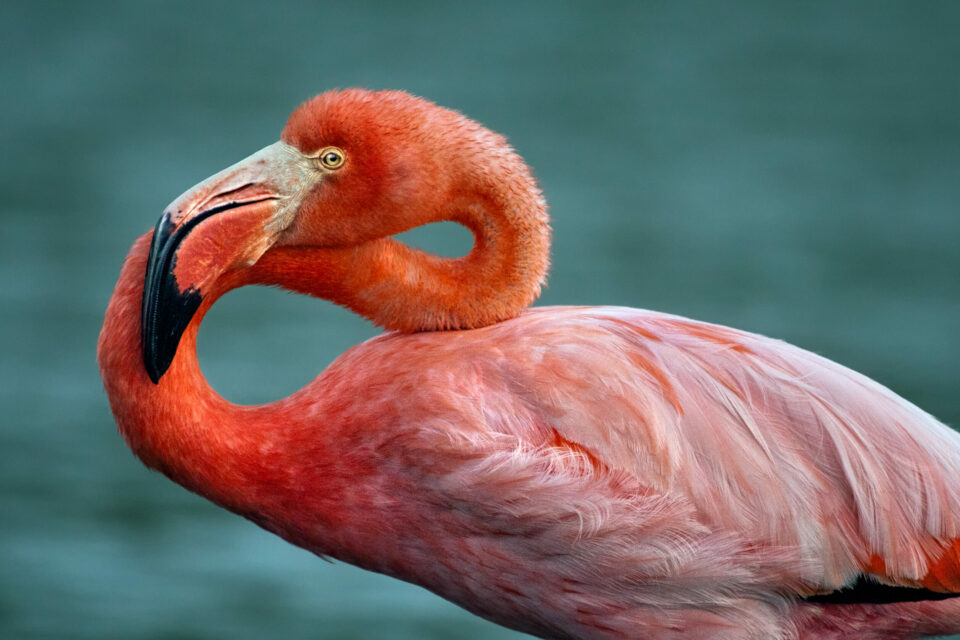

Most successful breeding season yet for Saving the Little Vermilion Flycatcher project!
Incredibly exciting news came during the COVID-19 lockdown in Galapagos - six little vermilion flycatcher chicks successfully fledged their nests on Santa Cruz as part of our Saving the Little Vermilion Flycatcher project.
Incredibly exciting news came during the COVID-19 lockdown in Galapagos – six little vermilion flycatcher chicks successfully fledged their nests on Santa Cruz as part of our Saving the Little Vermilion Flycatcher project!

Female little vermilion flycatcher feeding a chick of a successful nest in 2020. © Agustin Gutierrez/CDF
Project background
Working with our project partners, the Charles Darwin Foundation and Galapagos National Park Directorate, this project looks to restore the Scalesia forest habitat and reduce predator pressure by controlling invasive species, such as rats and the invasive parasitic fly Philornis downsi, on these endemic birds.
The little vermilion flycatcher, listed as vulnerable on the IUCN Red List, has vanished from Floreana and Santa Fe islands in Galapagos. They were not detected on Santiago island in 2020 after intense searches. About 30 years ago on Santa Cruz, the population was abundant, but now it has declined to about 40 breeding pairs due to habitat degradation and the impact of P. downsi.
To stop the little vermilion flycatcher from going locally extinct on Santa Cruz, the team use the insecticide Permacap to reduce P. downsi infestations, reduce predation pressure through rodent control and conduct habitat management. In late 2018, they started clearing six former vermilion flycatcher territories of invasive plants to provide more open hunting grounds for the birds.
The team had noticed differences in feeding behaviours between the struggling population on Santa Cruz and a healthy population on Isabela. On Isabela, the birds are feeding on more diverse insects and can feed their chicks with relative ease. The last remnants of the Santa Cruz population survive in an area overgrown by the invasive hill raspberry (Rubus niveus). The dense vegetation leaves very little open space near the ground for the birds to hunt insects that are crucial for chick rearing. Due to this restricted access to the ground, the little vermilion flycatcher captures its prey at heights from 1.5 to 4m in Santa Cruz, while in open areas in Isabela prey was caught much lower between 0.8 to 2m.
Recent project successes
After clearing the plots in 2019, reproductive success was still low. However in early 2020, the team continued clearing the re-sprouting invasive hill raspberry and other detrimental plant species, as well as replanting Scalesia trees where needed. Even though activities were suspended in March due to the COVID-19 pandemic, due to the team’s hard work clearing plots in 2018 and 2019, and spraying nests earlier in the year, the 2020 breeding season was the most successful yet. However, the lockdown meant that if any of the nests became infested with the larvae during this time, they were unable to be treated. There is the possibility that more chicks could have survived if fieldwork could have continued.

Map of plots and territories of Little Vermilion Flycatcher in Mina Roja and Los Gemelos – Santa Cruz © CDF
Of the six plots cleared by the team, five were occupied by little vermilion flycatcher pairs and one plot was used by two couples that were competing for the site. Of these six pairs that used the plots, two had successful nests. In Los Gemelos, a pair had a successful nest with three fledglings! All the successful nests had been treated with the insecticide.
Before the lockdown in Galapagos, the team conducted some behavioural studies to understand more about how to help the birds. Some of the birds have been tagged with a small coloured band. This allowed the team to observe that in the Santa Cruz population some of the males are paired with more than one female. The team have also been observing aggressive interactions with other bird species around occupied nests to investigate whether this disturbance is causing any nest abandonment. This research into the behaviour of this struggling population is in its very early stages and needs to be analysed in more detail. We can’t wait to see the development throughout this exciting project and, hopefully, we will see behaviour comparisons to other populations, like those on Isabela.

Nest treatment to reduce the impact of P. downsi using a long pole with injection and ladder to get closer to the nest. © Agustin Gutierrez/CDF
How you can help
Thank you to everyone who supported this project through our Land Birds Appeal in 2019 and our Vital Work at A Critical Time Appeal in response to the current pandemic. Even though activities this year had to be suspended due to the lockdown, the breeding season has been the most successful ever. As Galapagos relaxes movement restrictions, our scientists are ready to get back out into the field as quickly and safely as possible to resume clearing the plots and monitor these vulnerable birds. Your generous donations will enable us to continue this critical conservation work and save the little vermilion flycatcher.
Related articles


5 of the most colourful birds in Galapagos

Galapagos Day 2023: Rewilding Galapagos



